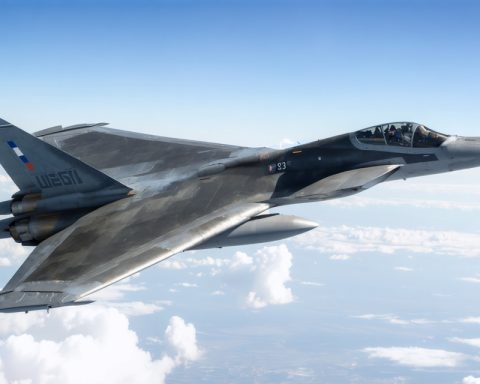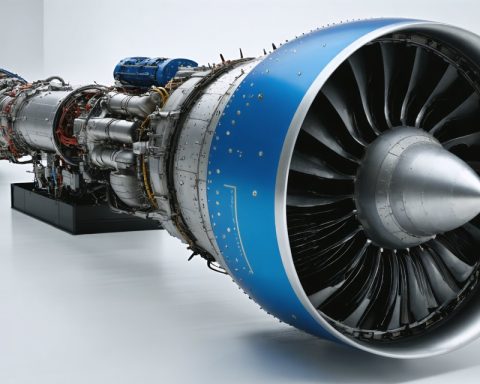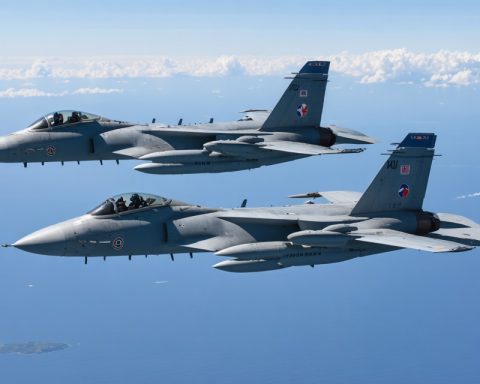- U.S. Air Force F-16C Vipers are adapting to new threats with innovative weapon loadouts, notably using dual seven-shot 70mm rocket pods.
- The integration of Advanced Precision Kill Weapon System II (APKWS II) rockets alongside AIM-120 AMRAAM and AIM-9 Sidewinder missiles illustrates tactical evolution.
- Originally for air-to-ground use, these laser-guided rockets now engage drones, providing a cost-effective alternative to expensive missiles.
- Unique markings on jets, including drone kill emblems, symbolize successful engagements, highlighting strategic innovations in combat readiness.
- The increased magazine capacity denotes a strategic necessity, offering more efficient defense amid growing aerial threats.
- This shift toward APKWS IIs could reshape air combat strategies by combining affordability with precision and lethality.
- F-16Cs equipped with diverse arsenals maintain air superiority and balance in a region with evolving hostile dynamics.
Above the vast expanse of the Middle East, U.S. Air Force F-16C Vipers slice through the sky, newly armed in a way that surprises even seasoned observers. Their wings bristle with weapons—a telling sign of evolving military tactics in a region fraught with drone threats. What catches the eye is the unorthodox presence of two seven-shot 70mm rocket pods perched on a single pylon, defying past norms of just one.
These F-16Cs carry a lethal mix: AIM-120 AMRAAM and AIM-9 Sidewinder air-to-air missiles, signature tools in aerial combat. Meanwhile, the addition of Advanced Precision Kill Weapon System II (APKWS II) rockets paints a picture of innovation. Originally designed as air-to-ground munitions, these laser-guided rockets now engage drones, offering a cost-effective alternative to pricier missiles.
Vivid images illuminate these innovations, revealing tactical badges of honor. One jet flaunts a drone kill marking, alongside mysterious revolver silhouettes that may hint at past victories using its roaring 20mm Vulcan cannon. Each symbol speaks volumes, narrating tales of battle overhead.
A need for greater magazine depth has spurred these changes. As aerial threats loom, the ability to deploy multiple precision rockets offers strategic advantage, keeping costly missile restocks at bay. Reports assert that maintaining such adaptable loadouts ensures readiness against formidable foes.
Culminating years of tactical refinement, the expanded use of APKWS IIs heralds a shift in air combat. These lightweight rockets might just redefine air strategies, marrying affordability with lethality. Armed with this diverse arsenal, the F-16s patrol more than skies—they guard the fine balance of power against emerging threats.
Revolutionizing Air Combat: The F-16’s Dynamic Arsenal Against Modern Aerial Threats
Features, Specs & Pricing: The Diversified Arsenal
The U.S. Air Force F-16C Vipers employ a diverse range of weapon systems, primarily focused on enhancing their defense capabilities against drones:
1. AIM-120 AMRAAM: An established air-to-air missile that combines beyond-visual-range capability with active radar guidance.
2. AIM-9 Sidewinder: A close-range, heat-seeking air-to-air missile. Known for its reliability, it is a staple in aerial dogfighting.
3. Advanced Precision Kill Weapon System II (APKWS II): These are 70mm laser-guided rockets, modified to engage aerial threats. Initially air-to-ground, they offer a cost-efficient alternative to high-value missiles.
This loadout’s versatility is critical in rapidly evolving combat scenarios where adaptability and cost-control can be key to maintaining superiority.
Real-World Use Cases: Tactical Evolution
The integration of these weapon systems is a strategic evolution driven by the rising prevalence of drone warfare in the Middle East, underscoring:
– Drone Threat Mitigation: Drones pose unique challenges, as they are often inexpensive yet disruptive. Using APKWS II rockets effectively offers a practical and economical countermeasure.
– Operational Flexibility: With more varied armament, F-16s can swiftly adapt to different battlefield needs, whether countering drones or engaging in traditional air combat.
Security & Sustainability: Ensuring Readiness and Cost-Effectiveness
– Cost Efficiency: Deploying APKWS II rockets instead of costly missiles for smaller threats like drones conserves resources.
– Enhanced Mission Readiness: The combination of different weapons increases the aircraft’s ability to engage various threats without returning for rearming, essential in dynamic air defense scenarios.
Pros & Cons Overview
Pros:
– Cost-Effective Defense: APKWS II provides an affordable alternative for neutralizing drones.
– Enhanced Versatility: A diverse arsenal makes F-16s adaptable to diverse aerial threat conditions.
– Increased Payload Capacity: The ability to mount more ordnance (i.e., two rocket pods on one pylon) extends operational effectiveness.
Cons:
– Technical Complexity: Managing a varied arsenal may require more training and logistical support.
– Limitations in Range: Rockets like the APKWS II have a shorter range compared to conventional missiles, potentially limiting engagement distance.
Insights & Predictions: Future of Air Combat
– Expansion of Rocket Use: The success of using rockets like APKWS II against drones might encourage further innovation, possibly leading to new versions specifically designed for aerial targets.
– Broader Adoption: Other nations could adopt similar strategies as drone threats continue to escalate globally.
Actionable Recommendations
– Training: Airforce personnel should receive specialized training to proficiently manage and deploy new systems like APKWS II.
– Investment in R&D: Continued investment in R&D will fortify the effectiveness of these evolving technologies, potentially leading to even greater efficiencies in aerial combat.
By leveraging affordable and versatile weapons systems, air forces worldwide can maintain strategic advantages despite budgetary constraints or emerging airborne threats.
Read more about such advancements in military tactics at the official U.S. Air Force website: U.S. Air Force.







